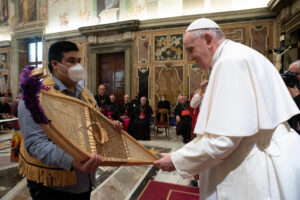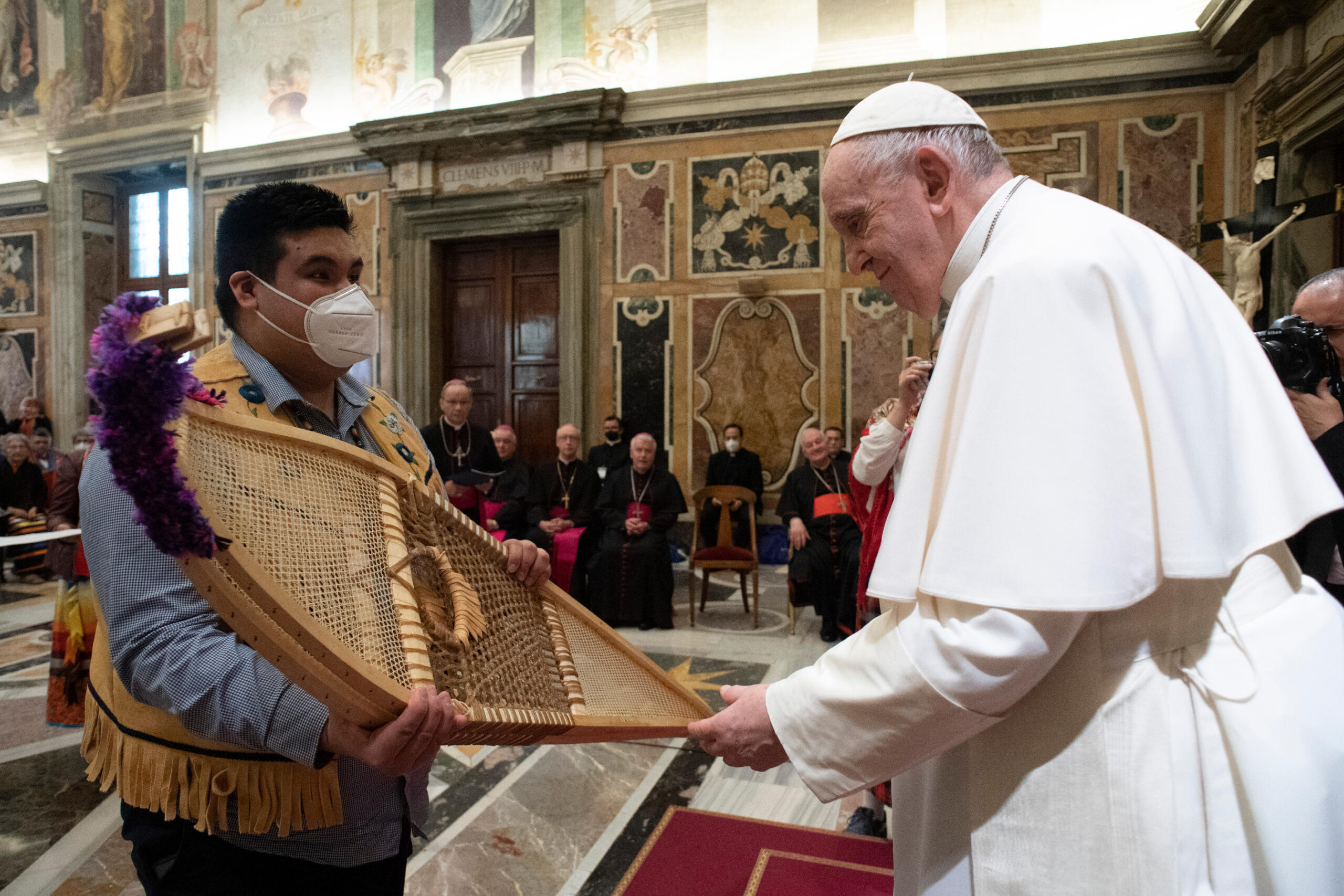Pope Francis in Alberta, Quebec and Nunavut from 24 to 29 July: all the details

VATICAN CITY – He had repeatedly expressed his desire to go to Canada where the Church is engaged in an important process of reconciliation with the indigenous people. And this morning the official announcement arrived: Pope Francis will go to Canada, from 24 to 29 July (when we will leave to come back to Rome), and will stop in Alberta, Quebec and Nunavut, “accepting the invitation of the civil authorities, ecclesiastical and indigenous communities” as the director of the Vatican Press Office, Matteo Bruni, said. This is the Pope’s 38th apostolic journey, which will touch the cities of Edmonton, Québec and Iqaluit.
In the audience on April 1 in Vatican with the delegations of the indigenous peoples of Canada, previously met individually, Francis had indicated a rough period, recalling the devotion “to Saint Anne, the grandmother of Jesus: this year – he said – I would like to be with you in those days “. The memory of Sant’Anna falls on July 26th.
In the same audience, the Pope had asked forgiveness for what happened in the past and dramatically re-emerged in these times with the discovery of a mass grave in the Kamloops Indian Residential School and then in others: a story of abuses and violence committed between the end of the 19th century and the last decades of the 20th century, when the Canadian government had established residential schools to assimilate indigenous children culturally, entrusting them to local Christian churches, including the Catholic one. In these structures, the children often suffered mistreatment and abuse.
“I told you and I repeat it: I feel shame, pain and shame for the role that various Catholics, especially with educational responsibilities, have played in everything that has hurt you, in the abuses and in the lack of respect for your identity. , your culture and even your spiritual values. All of this is contrary to the Gospel of Jesus “, said the Pontiff during the meetings with the natives in the Vatican (in the photo above – Vatican Media – a moment of the final meeting).
The Pope’s visit, as Vatican News reports, is one of the stages in the path of reconciliation initiated by the Canadian Church, as soon as the truth has been ascertained. A path that Francis invited to take with determination because “an effective process of rehabilitation requires concrete actions”. Hence the encouragement “to continue to take steps for the transparent search for truth”, “to promote the healing of wounds and reconciliation” and to allow the rediscovery and revitalization of the culture of indigenous people, increasing love, respect and specific attention to their traditions.
The bishops of Canada welcomed with joy the announcement of the dates of the Pope’s trip, “a historic visit – they write in a statement – focused on healing and reconciliation” with indigenous peoples. It will be the fourth visit of a Pope to Canada, the last dating back to the trip of John Paul II in 2002. In 1984, Pope John Paul II had spent 12 days touring the country, landing in Quebec City and traveling through most of the provinces before heading to Yellowknife. Three years later, he had stopped for a day at Fort Simpson, N.W.T. and, finally, he returned in 2002 for World Youth Day in Toronto.
“We are immensely grateful to the Holy Father – says Archbishop Raymond Poisson, president of the Canadian Conference of Bishops – for having accepted our invitation to continue the journey” undertaken. “Pope Francis – he continues – will have the opportunity to visit indigenous peoples in their homeland” fulfilling their desire to host him as promised when he recently met them in Rome. “Let us pray for the health of the Holy Father as we begin the intense planning of the visit”.
Archbishop Richard Smith of Edmonton, general coordinator of the Pope’s trip on behalf of the Canadian Bishops’ Conference, says it will be another important step in healing and reconciliation. Smith, CP24 reports, says that the places were chosen by the Vatican and that it was necessary to consider the mobility and health problems of the Pope: the three cities were therefore selected based on the duration of the trip, the vast dimensions of Canada and the health of the 85-year-old pontiff. the Pontiff has in fact started using a wheelchair and limps pronouncedly and recently canceled some events due to pain.
The three cities selected will offer indigenous people across the country more opportunities to see the Pope. Edmonton is home to the second largest number of indigenous people living in urban centers and there were 25 residential schools in Alberta. Also nearby is Anne, an important site for indigenous people and the site of a major religious pilgrimage every July. Iqaluit, located on the Baffin Island of Nunavut, is home to the highest Inuit population. Canadian bishops said Quebec City will be a hub for indigenous people, not only in Quebec, but in the east of the country to see the Pope. The city is also close to Sainte-Anne-de-Beaupré, another important place of pilgrimage.
Many indigenous leaders had asked Pope Francis to visit Kamloops, British Columbia, where the discovery of unmarked graves in a former residential school spurred first worldwide demands for justice and transparency. Smith said the Pope’s mobility limits where he can go, but the Pope is expected to travel to a former residential school site on the way.



